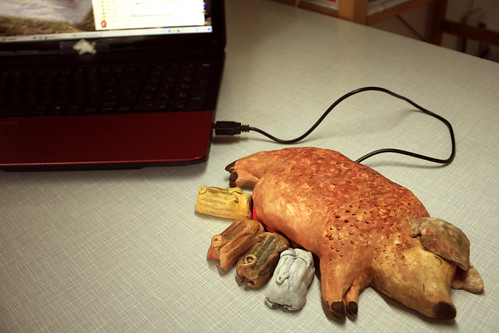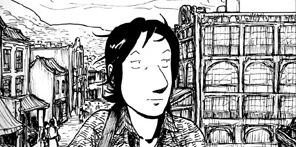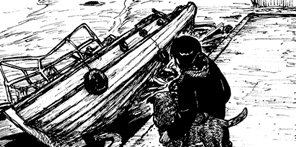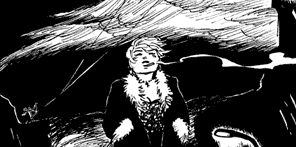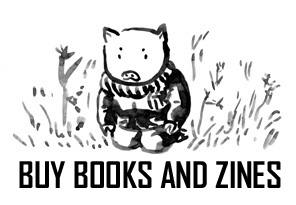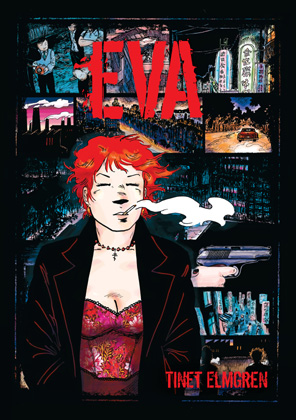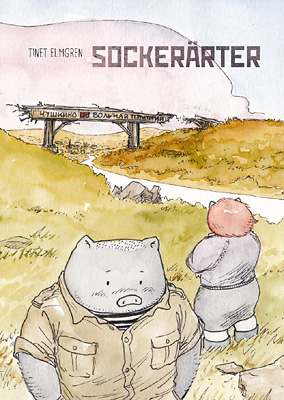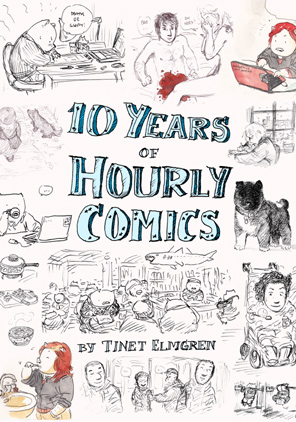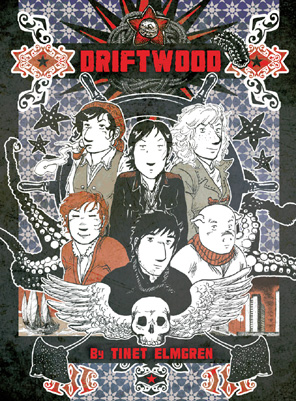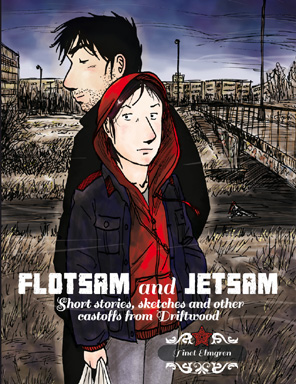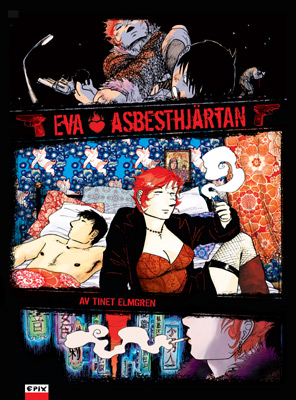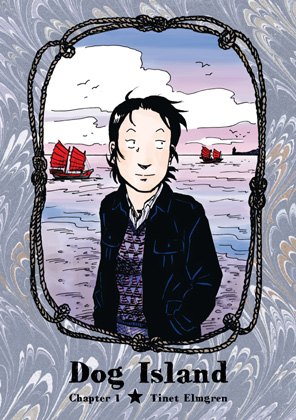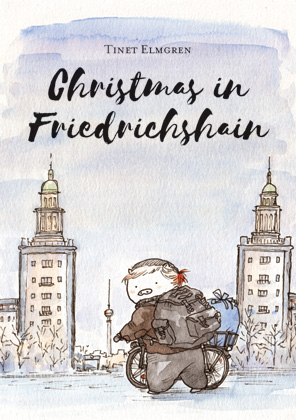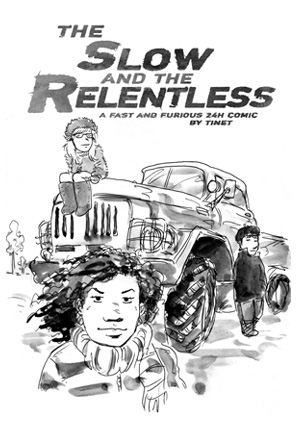Comics production of 2012 assessed
So every year on December 9th I count how many pages and panels of comics I have drawn. This past year I wasn’t even counting as I went, or trying to achieve any specific goal, but I actually managed a few more pages than last year …
Number of pages and panels I have drawn since December 9th 2011:
Driftwood chapter 9 (from page 30): 29/190
Driftwood epilogue: 3/7
Driftwood deleted scenes: 4/34
Her 18th Birthday: 20/110
Hourly Comics Day 2012: 12/23
Dog Island: 13/81
Daydreams: 1/4
My garden and some of those I share it with (this year’s 24 h comic, which I finished just hours ago): 29/102
____________________________________
111 pages / 551 panels
(All-time total as of today: 831 / 4202)
Last year I drew a bit less – 102 pages and 471 panels. The panels per page ratio also rose a bit now, from an average of 4,6 panels per page last year, to an average of 4,96 panels per page – practically as high as it was in July 2007–December 2009, back when I didn’t draw (smaller-format) 24 hour comics and hourly comics every year yet.
Leading the reading
I have no formal education in arts or drawing comics, and a lot of my comics making happens unconsciously. Things I do are good if it just “feels right” or “makes sense” and bad if it “feels wrong”. Sometimes it can take a day or even a week until I find a solution to why something wasn’t working. At such times, I wish I knew more about the theory of making comics, so that I could know exactly why something isn’t working …
One thing I’ve started to pay attention to is how to lead the reader’s eyes across the page.
I started to notice how I do this during the editorial process of my Swedish Comic Sin anthology contribution. The books are made through collective self-publishing, and before the book is put together, everybody can critique each others’ comics and offer advice on what doesn’t work and how something could be better. Several of my fellow artists had problems with my frequent use of this type of layout:

It’s very common in Japanese comics – that’s where I picked it up – and I like to use it because it allows for variety in the layouts. However, there are great risks of a culture clash when Europeans read this type of layout!
In Japanese comics, the reading order is strictly set as demonstrated above, and I can’t remember ever having seen the rules being broken. But in the rare cases when European comics use it, there are no fixed rules for the reading order, so artists often use arrows to point out the (to me often ‘illogical’) reading order. So when European readers are confronted with it and have no arrows to help them, they can get confused.
Now, I could scoff at them for being illogical and uneducated … Or I could compose my panels in such a way that there is no confusion regarding the reading order.
The page most people had a problem with was one where I’d sketched one crucial panel wrong, but didn’t bother fixing it before I sent out the sketches to the editorial collective:
Blue arrows: geometry (shapes, perspective etc.)
Red arrows: faces (and to some degree body language) of characters
Green arrows: speech bubbles and captions
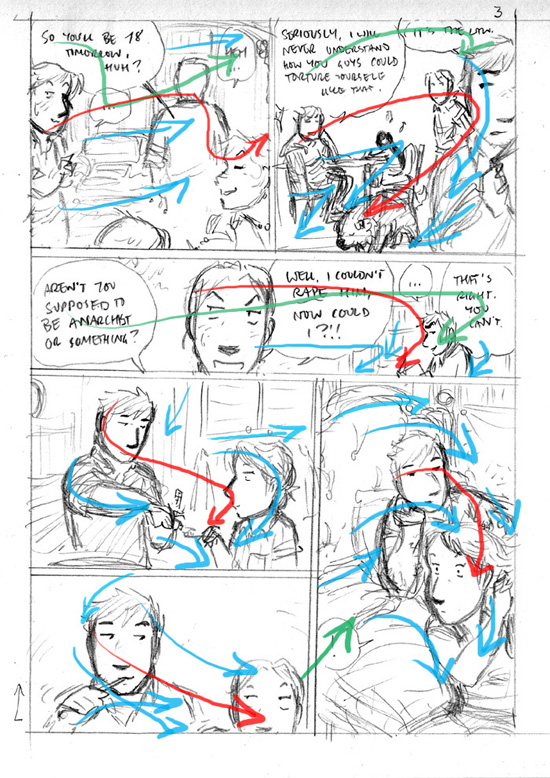
This is how I fixed it in the final version:
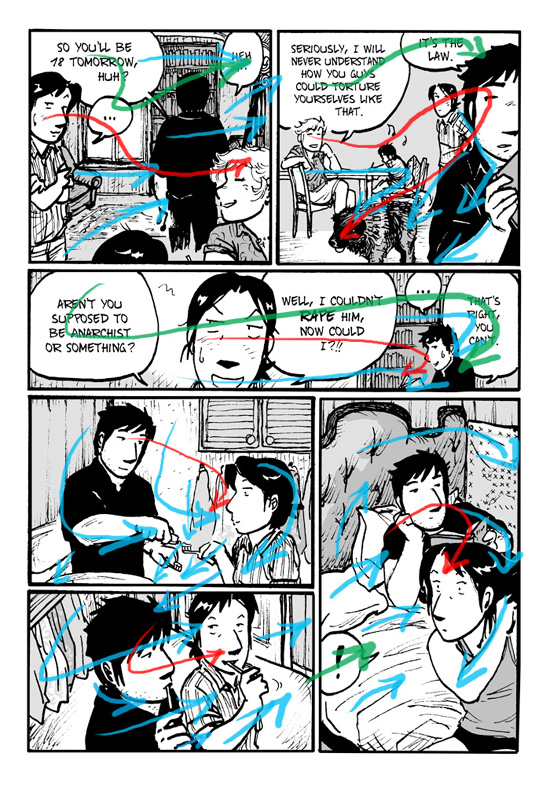
I composed panel 5 in a radical “<” shape, picking up the lines from panel 4 and redirecting them towards panel 6.
If I did it today I may even have changed the cabinet on the wall in panel 4, since it has unnecessarily confusing horizontal lines that point towards panel 6 …
I’m not exactly a master of this trade, and I have a lot of room for improvement. But for everyone’s education I will post some more examples behind the cut, from my comic Driftwood!
Secret piggy project, revelation!
So, I made a piggy mummy USB hub with piglet USB sticks!
Drawings – child pornography or not? As of today, it’s slightly less arbitrary in Sweden.
Remember the case with the Swedish comics expert who was charged with possession of child pornography in 2010? He was sentenced to fines in the two lower instances – the District court and the Court of appeal – and appealed both times, but today we got the news that the Supreme court has acquitted him.
The Supreme court still signals that the law as it is written today is okay. It deemed that 38 of the 39 allegedly pornographic drawings were in fact not child pornography, “since they are fantasy characters that cannot be mistaken for real children”. But the Supreme court still thought that one of the drawings is child pornography, because it was “realistic” (or “reality-like” – the Swedish word is a bit more ‘real’ than the English word) – however, it deemed that his possession of this drawing was defensible, since he is an expert on Japanese comics and it was one of thousands of other graphics on his hard drive.
Perhaps the public will never know exactly how realistic a drawing has to be to be child pornography, because it’s illegal to show it. If it is “photorealistic” – almost or as detailed as a photograph – it would perhaps make some sense. The sentence refers to the EU directive 2011/93/EU, which aims to criminalize only images that “reproduce reality”.
However, expert witness Fredrik Strömberg, one of the few people who have seen all the graphics in question, states that the 39th drawing was not “very much more realistic than any other”, only “drawn in a slightly more European style”.
So, if this one drawing is just a little bit more realistic than the “huge eyes – tiny mouth” commercial kids’ manga style, it’s still extremely difficult for artists and readers to know where the line is. It’s still up to the justice system to arbitrarily judge whether a drawing is child pornography or not.
Still, I’d say the threshold has become a bit higher – after this sentence, it’s probably not quite as unpredictably easy anymore to get accused of possessing or spreading child pornography in the form of drawings. The law has gotten a bit closer to “common sense”.
It would of course be even better if there could be a clear line – for example, if all drawings would be legal, since there are no real persons in them, while photos and videos of actual underaged people would be illegal. Hopefully this sentence is a step in the right direction.

